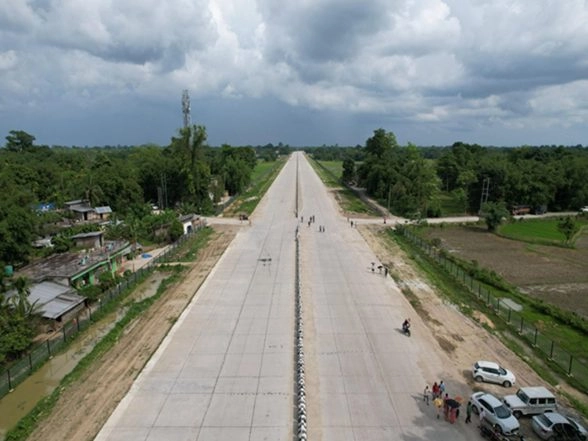New Delhi [India], October 22 (ANI): To enhance the experience of the commuters on National Highways, NHAI will deploy Network Survey Vehicles (NSV) in 23 states covering 20,933 km for collection, processing and analysing Road inventory and Pavement condition data of National Highway stretches, the Ministry of Road Transport & Highways said in a press release.
The deployment of NSVs will enable NHAI to collect necessary data related to road inventory and pavement condition, including all relevant road defects like surface cracking, potholes and patches etc. The data collected through NSV surveys will highlight deficiencies in road conditions, prompting NHAI to take corrective measures for better upkeep of National Highways.
Also Read | Chhath Puja 2025: Indian Railways To Run 1,500 Extra Trains in Next 5 Days To Clear Chhath Festive Rush.
Data collected through the NSV survey will be uploaded on NHAI’s ‘AI’ based portal Data Lake, where it will be analysed by a dedicated team of experts at NHAI to transform data into knowledge and subsequent actionable insights. Finally, the data collected at regular intervals as per Government of India guidelines shall be preserved for future technical purposes in the Road Asset Management system in prescribed formats.
The pavement condition surveys will be carried out using a 3D laser-based NSV system capable of capturing and reporting road defects automatically without any human intervention, with the help of high-resolution 360-degree cameras, DGPS (Differential Global Positioning System), IMU (Inertial Measurement Unit), and DMI (Distance Measuring Indicator). These are equipped with versatile data acquisition & processing software to accurately measure and report the inventory & pavement condition data. The data shall be collected for all projects involving 2/4/6 and 8 lanes with NSV before the start of work and thereafter at regular intervals of six months. To implement this initiative, NHAI has invited bids from qualified companies.
Also Read | Bihar Assembly Elections 2025: RJD Candidate Shweta Suman Breaks Down After Her Nomination Gets Cancelled, Alleges BJP Conspiracy (Watch Video).
The Network Survey Vehicle (NSV) System is a specialised infrastructure management tool comprising vehicles equipped with advanced sensors and data acquisition systems. These vehicles systematically collect data on road inventory and the condition of National Highways. The collected data is useful to take decisions for pavement maintenance, asset management, and infrastructure planning, contributing to the enhancing safety and efficiency of the National Highway Network across the country. (ANI)
(The above story is verified and authored by ANI staff, ANI is South Asia’s leading multimedia news agency with over 100 bureaus in India, South Asia and across the globe. ANI brings the latest news on Politics and Current Affairs in India & around the World, Sports, Health, Fitness, Entertainment, & News. The views appearing in the above post do not reflect the opinions of Pune Media)
Images are for reference only.Images and contents gathered automatic from google or 3rd party sources.All rights on the images and contents are with their legal original owners.
